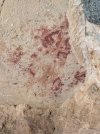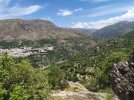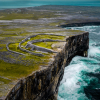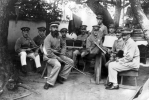Came across this map, mapping out all the Japanese ships sunk during WW II.

Looks like the sun sank on those.
Came across this map, mapping out all the Japanese ships sunk during WW II.




A poignant perspective. Men from 3 Field Ambulance Bearer Section before and after Gallipoli.
View attachment 31559




Dún Aonghasa, a prehistoric fort on Inis Mór, the largest of the Aran Islands in Ireland. Dating back to around 1100 BC, it is built on a cliff overlooking the Atlantic Ocean. The fort features concentric semicircular walls and defensive structures, showcasing sophisticated Bronze Age construction. The exact identity of its builders, and the specifics of its usage over time remain unknown.
View attachment 31621
From an article "A Graveyard of Ships at Bikini Atoll."

Looks impregnable, without superior artillery. Would fall in a siege though, through starvation alone.
A poignant perspective. Men from 3 Field Ambulance Bearer Section before and after Gallipoli.
View attachment 31559



